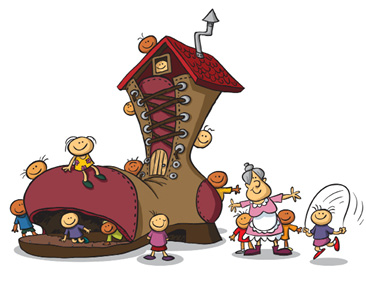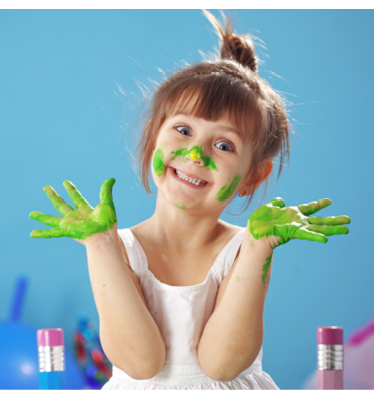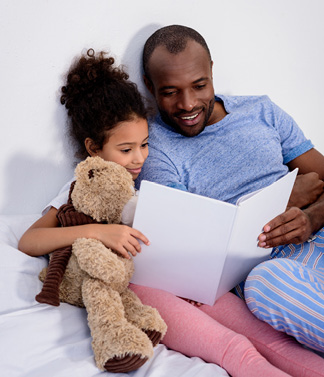
Developmentally Appropriate Kindergarten
If you are homeschooling kindergarten this year and have asked homeschooling friends what to do, you may feel you have only two options: An academic year full of curriculum, or unschooling, where you just trust your child will play their way to all the skills they need. Are you frustrated? I am. As an occupational therapist, I know there is at least one more choice, developmental kindergarten. Developmental kindergarten focuses on helping children develop all the underlying skills they need to go on to be successful. Many versions of kindergarten have existed since it’s origins over 100 year ago, but in the beginning it was supposed to be a place where children learned and grew in a developmentally appropriate way. It was not supposed to teach reading, writing, spelling or other academic skills, but to instead help children build physical and mental skills that would help them to do well in school and life. The children were not expected to lead themselves, but to follow an adult’s example and play in groups with toys that were provided to give them growth opportunities.
As an OT, I miss those developmental kindergartens, because they helped children build skills that they often miss out on today. What were the magical things that were a part of that program? Blocks, dolls, toys, nursery rhymes and songs, story books, crafts and games were the heart of a good kindergarten. Today’s parents and teachers are skipping over these things, in favor of more academics, but let me tell you why these simple things make the best kindergarten experience possible.
Songs and nursery rhymes were a daily part of kindergarten once upon a time. Why bother to learn these archaic little poems? Because children learn language through rhyme, rhythm, and repetition best. By learning to recite rhymes and sing songs, children work on articulation, vocabulary and public speaking. The act of memorizing these poems about lambs and songs about very small spiders, activate long term memory skills the brain will use later to memorize important information.

Blocks are incredible sources for child development. If you want to spend money on kindergarten equipment, buy some good wooden unit blocks. Blocks are the most natural way to learn math, physics and visual perceptual skills. As a child builds homes, roads and castles, they count to make sure the walls match, they measure with their eyes where to put the next block, they imagine what it will look like when completed and work towards that goal. These basic skills are the ones that are essential to becoming engineers and architects. The hand strength to lift and move the blocks, prepares children for handwriting, tying shoes and working buttons. And the endurance of character to build again when your tower crashes down will serve them in every aspect of their lives.
Dolls and dress up are just as important as blocks. Children want to imagine themselves as adults, and having the space to play house, dress up, and care for dolls lets them do this. While performing this kind of play, children build fine motor skills as they dress the dolls, stir their play food and do other household tasks. If children engage in this play with friends, it also builds social skills and language skills. While playing with blocks may be a quiet task, playing house involves a lot of group imagination and communication. Children playing house teach each other new words as they mimic their parents. While it can be terrifying to hear your child discuss auto insurance, it is also pretty entertaining. These make believe conversations prepare children to have deeper thoughts and conversations when they return to being themselves, instead of their make believe character. The value of basic arts and crafts should never be underrated: Crayons, scissors, glue, and paint are essential to fine motor development. Do you want your child to have neat handwriting? Encourage them to spend time in kindergarten making
art. Paint with every kind of paint and brush you can find. Color with crayons and pastels. Help your child learn to cut with scissors. If you don’t know where to start with scissor skills, get a Kumon cutting book, which will help your child go from simple straight lines to complex shapes. Even the act of smearing with a glue stick and squeezing a bottle of glue, help develop hand strength and control that prepare children for writing later. The visual perceptual skill of learning to copy shapes and draw homes and people, are essential to learning to write. Too often today, I see kids in therapy who were pushed to learn to write letters before they could draw a decent circle or triangle, which should have come first.

Stories and books are at the heart of a good literacy start for your child. It isn’t important that your child read at this age, but that they are read to, daily. The language part of their brain that will some day search for words to write term papers, is gaining the vocabulary they need from listening to good story books. At age 5, many children do not yet have the ability to create the pictures in their minds that we adults see when reading a book, so picture books are most appropriate. Children can look at the pictures, hear the words and make more connections about the story than they would just hearing it. Encourage them to search for story clues in the pictures, the same way they will someday search for clues in the text to know what is going on.
We all know that children love messy play- sand, water, finger paints, sensory bins and play dough are almost universally popular. But what developmental skills does your child get from those? Fingers learn unique skills and build strength and dexterity from scooping, pouring, sifting, squeezing and all the motions done during messy play. Messy play builds muscles, as children lift heavy buckets of sand or water, and work at tasks much longer than usual. While a child may normally have
Laura Sowdon, OTR/L Woodbridge, VA an attention span of just a few minutes, messy play will draw a child in and keep them working at a task far longer. By building their attention span through play, they become ready to do adult directed tasks and lessons longer and with more concentration that they learned through play.
Kindergarten should be a fun year of learning and growing, not a stressful year of struggling to learn skills like reading and writing that tiny hands and eyes are not yet ready to do. Enhance your child’s kindergarten year by helping them learn and grow in a developmentally appropriate way. You only get to do kindergarten once, so enjoy this magical year with your child.

Laura is an occupational therapist, a veteran homeschooler and mother of three amazing kids, ages 16, 11 and 9. She blogs and writes curriculum for Five Senses Literature Lessons at www.5sensesLL.com While you can always build you own, Five Senses Literature Lessons offers developmentally appropriate curriculums that work for children with a wide range of learning styles and includes lesson plans to help you meet the needs of kids with learning challenges.
Check out our post on Advice on Applying to College here.
